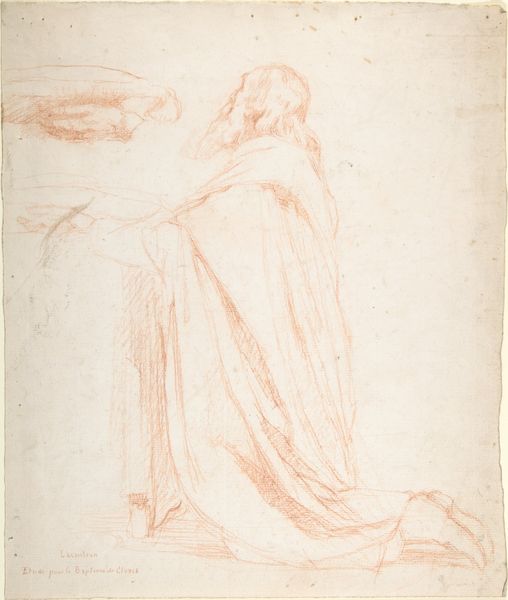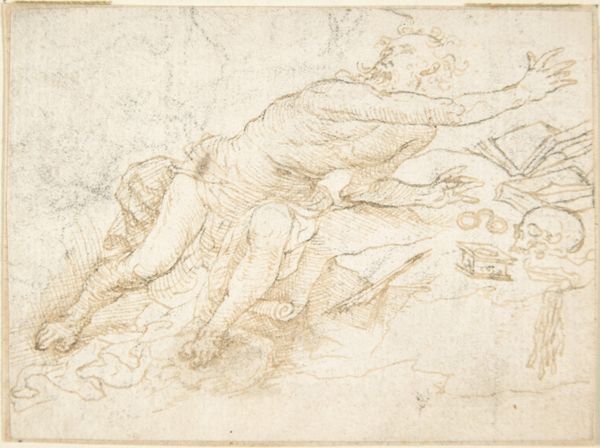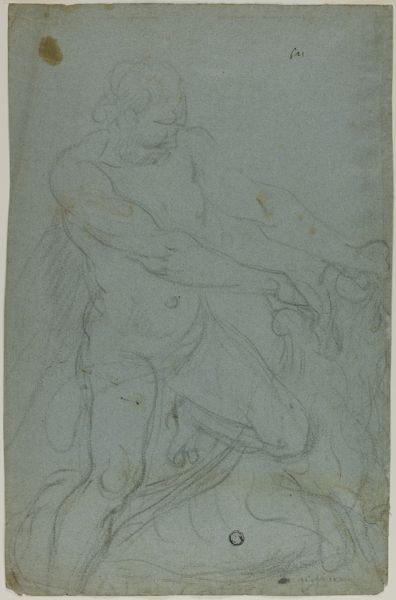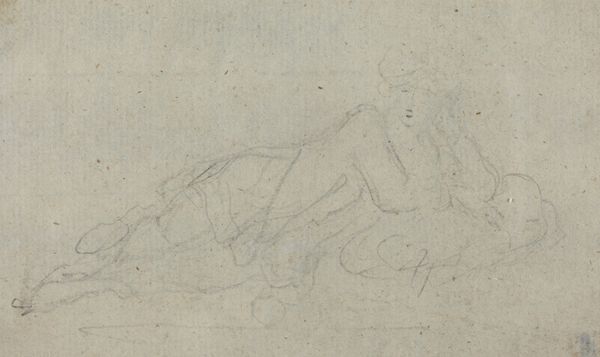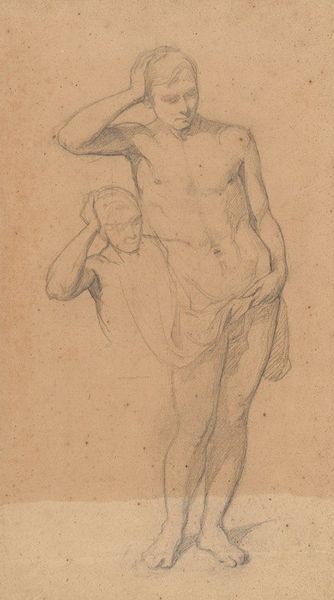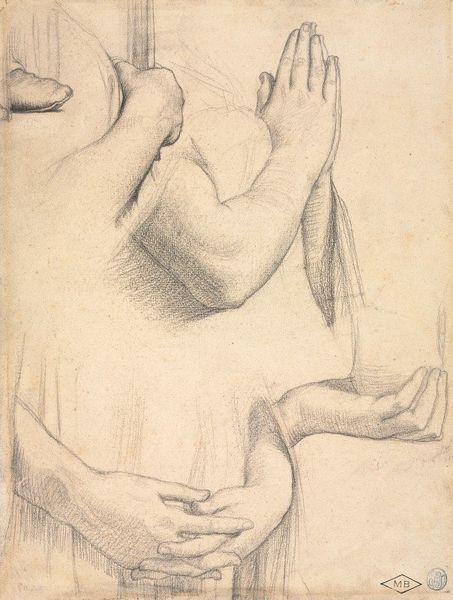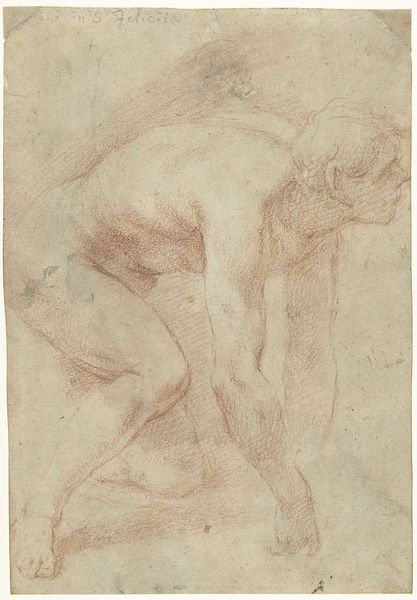
Copyright: Public Domain: Artvee
Curator: Upon first glance, it feels ephemeral, like a fading memory sketched in the palest light. Editor: Indeed. This pencil drawing is entitled “Reclining Woman Leaning on Her Arm” by Honoré Daumier, likely created between 1855 and 1860. Note how the very faintness speaks to transience and the inner lives it aims to capture. Curator: Absolutely. The looseness of the lines almost renders the figure intangible. Is that an intentional gesture, I wonder, meant to suggest an allegorical figure or perhaps even a muse, rather than an individual person? Editor: It could very well be. Daumier was a master of implication. The sketch's structure supports your theory too; there is almost no clear definition or fixed outlines that tie her to a concrete sense of reality. See how the softness of his mark-making transforms the female nude, a classic subject, into something veiled and internal. Curator: Her gaze also evades us, further distancing her and emphasizing the symbolism. Her eyes are mostly obscured, turning her head covering into a halo or some other kind of metaphorical crown. Editor: Precisely. The entire composition and form are structured with such a clear avoidance of classical linearity in drawing or composition—typical, really, for the Romantic period—which would otherwise highlight a realistic physical presence. It emphasizes movement and feeling rather than stoic idealism. Curator: So the piece isn’t merely a sketch of a reclining nude. Instead, it speaks of desire, dream states, and the delicate boundary between the corporeal and incorporeal worlds, consistent with much of the romantic figurative symbolic vocabularies used to imply these intangible states of emotional being. Editor: It also captures Daumier's artistic practice of allowing the medium's inherent properties to determine the final artwork. This method gives it an intimate feel, similar to that of keeping secrets from the rest of the world, even us. Curator: A lovely observation that is! One more layer in considering art's psychological and cultural persistence. Editor: Yes, I agree; it’s remarkable to consider how a preliminary study can retain such a powerful emotional weight centuries after its creation.
Comments
No comments
Be the first to comment and join the conversation on the ultimate creative platform.
